- HOME
- ABOUT US
- MUSEUMS
- VISIT
- GALLERY
- AUDIO GUIDE
- ETHNOGRAPHIC MUSEUM
- ONUFRI ICONOGRAPHIC MUSEUM GUIDE
- ONUFRI ICONOGRAPHIC MUSEUM GUIDE – OBJECT 2
- ONUFRI ICONOGRAPHIC MUSEUM GUIDE – OBJECT 3
- ONUFRI ICONOGRAPHIC MUSEUM GUIDE – OBJECT 4
- ONUFRI ICONOGRAPHIC MUSEUM GUIDE – OBJECT 5
- ONUFRI ICONOGRAPHIC MUSEUM GUIDE – OBJECT 6
- ONUFRI ICONOGRAPHIC MUSEUM GUIDE – OBJECT 7
- ONUFRI ICONOGRAPHIC MUSEUM GUIDE – OBJECT 8
- ONUFRI ICONOGRAPHIC MUSEUM GUIDE – OBJECT 9
- ONUFRI ICONOGRAPHIC MUSEUM GUIDE – OBJECT 10
- ONUFRI ICONOGRAPHIC MUSEUM GUIDE – OBJECT 11
- VIRTUAL TOUR
- CONTACT US
- HOME
- ABOUT US
- MUSEUMS
- VISIT
- GALLERY
- AUDIO GUIDE
- ETHNOGRAPHIC MUSEUM
- ONUFRI ICONOGRAPHIC MUSEUM GUIDE
- ONUFRI ICONOGRAPHIC MUSEUM GUIDE – OBJECT 2
- ONUFRI ICONOGRAPHIC MUSEUM GUIDE – OBJECT 3
- ONUFRI ICONOGRAPHIC MUSEUM GUIDE – OBJECT 4
- ONUFRI ICONOGRAPHIC MUSEUM GUIDE – OBJECT 5
- ONUFRI ICONOGRAPHIC MUSEUM GUIDE – OBJECT 6
- ONUFRI ICONOGRAPHIC MUSEUM GUIDE – OBJECT 7
- ONUFRI ICONOGRAPHIC MUSEUM GUIDE – OBJECT 8
- ONUFRI ICONOGRAPHIC MUSEUM GUIDE – OBJECT 9
- ONUFRI ICONOGRAPHIC MUSEUM GUIDE – OBJECT 10
- ONUFRI ICONOGRAPHIC MUSEUM GUIDE – OBJECT 11
- VIRTUAL TOUR
- CONTACT US
ETHNOGRAPHIC MUSEUM

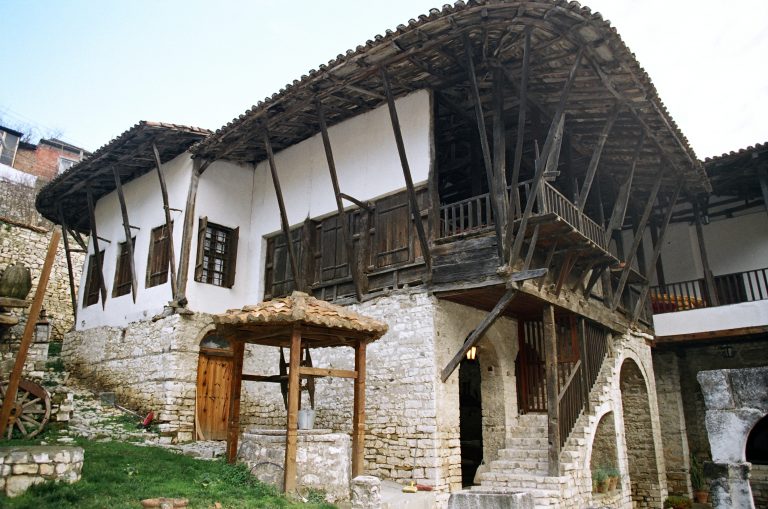
The Ethnographic Museum with a rich collection of 1,300 objects is an important testimony to the culture, the interesting and rich traditions of the Berat area.
On the first floor, a recreated street of a medieval bazaar showcases objects that are representative of the once most developed crafts of the region, such as weaving, silver-smithing, copper-smithing as well as clothes and decorations that indicated the aristocratic quality of life of the middle and rich classes of the city. In the open space of the porch there is an exhibition of crafts which were practiced at home for the needs of the family. The porch is naturally connected to the well and the courtyard in which there is an exhibition of ceramic and stone-carved objects. The exhibitions in the rooms on the second floor show the former lifestyle, organization, traditions and customs of a rich family from the city in the late Medieval Ages.
The Medieval Bazaar
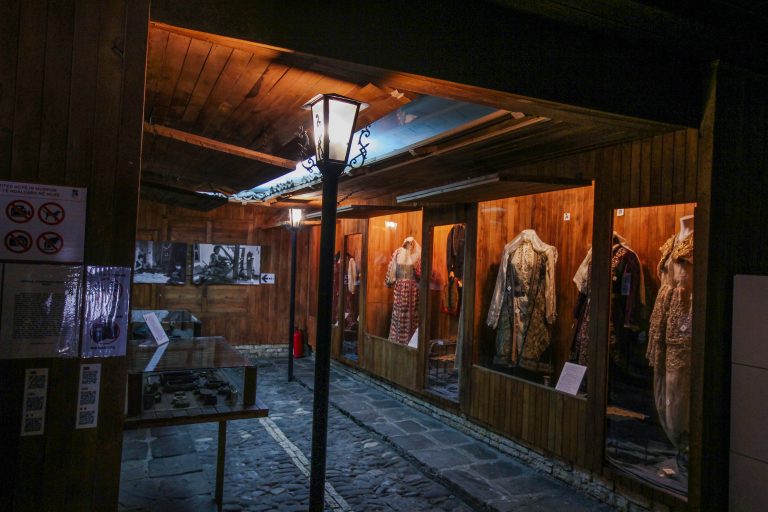
The porch
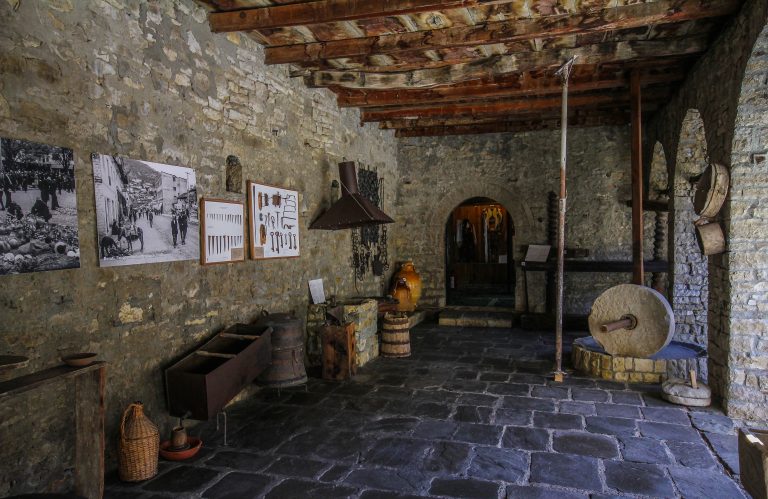
The chardak
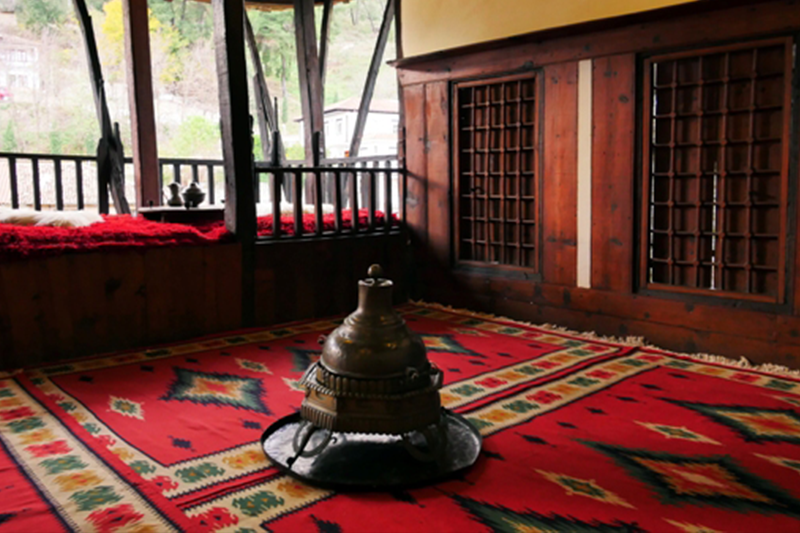
The workroom
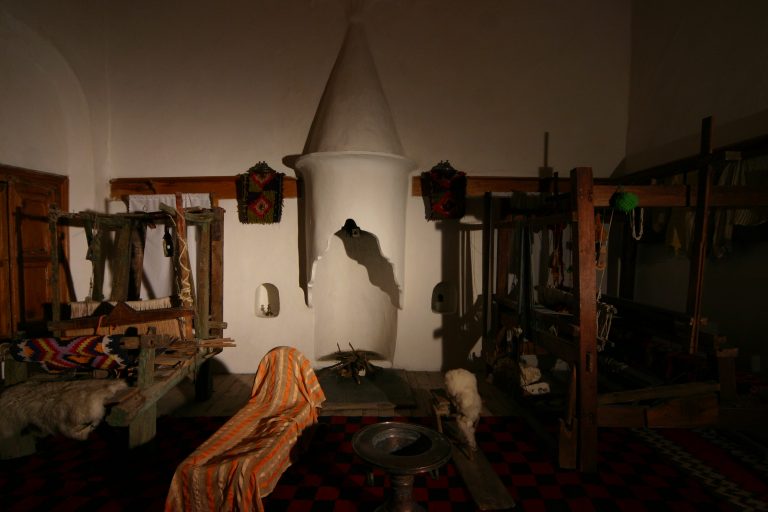
The guest room
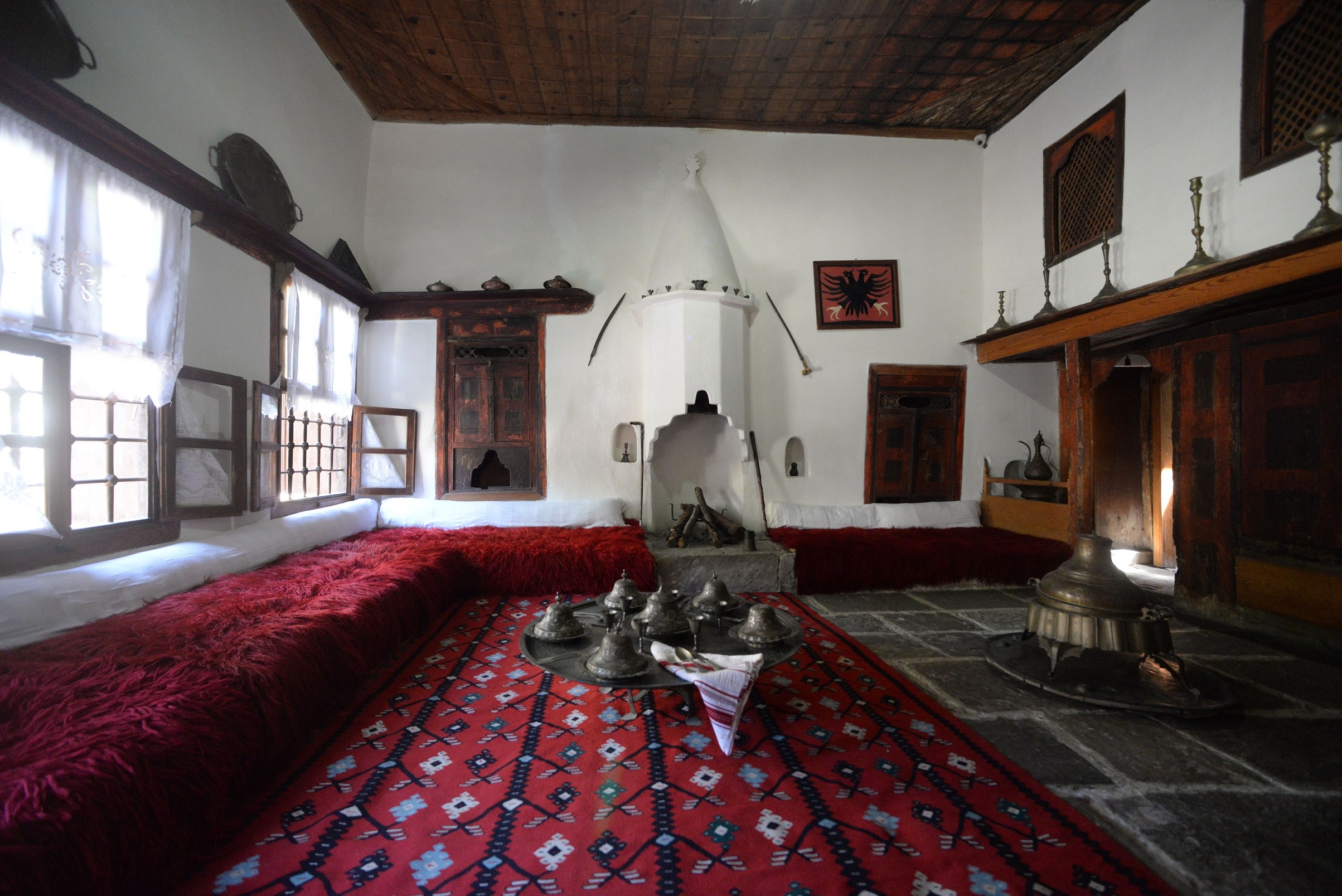
It was the most important room in the traditional houses, well-known for its decorative and architectonic values. The room was used for welcoming guests and organizing family ceremonies. Distinct in the room are the elegant fireplace, the built-in cupboards, the decorated ceiling, the mahfil attached to the closet, the divans with high pile rugs, and the tableware.
Ethnographic Museum Collection
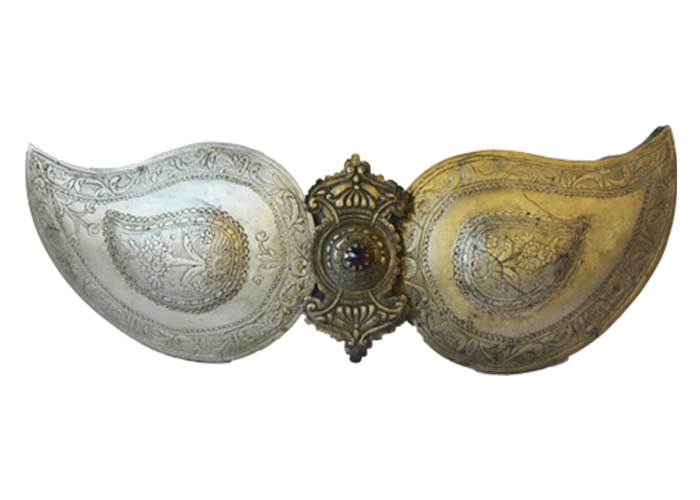
Buckle
Women of the aristocracy of Berat would always wear it on their costumes. It belongs to the XIX century and it is made of silver with the casting and forging technique.
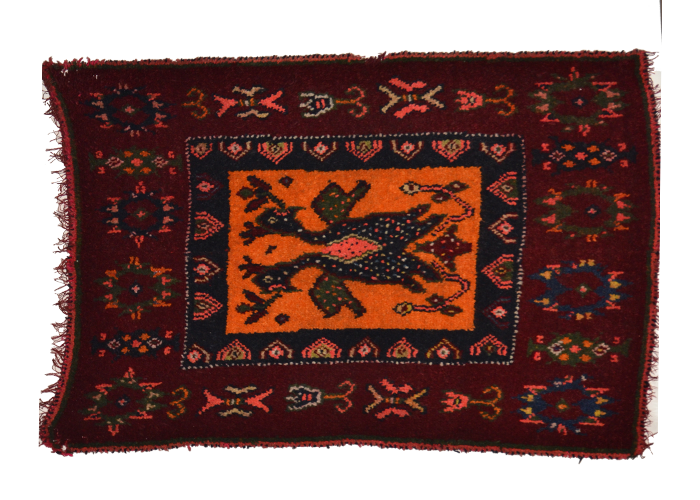
Tapestry
It dates back to the beginning of the XX century. Its fabric is wool and it was handmade by housewives as part of the dowry of the bride.
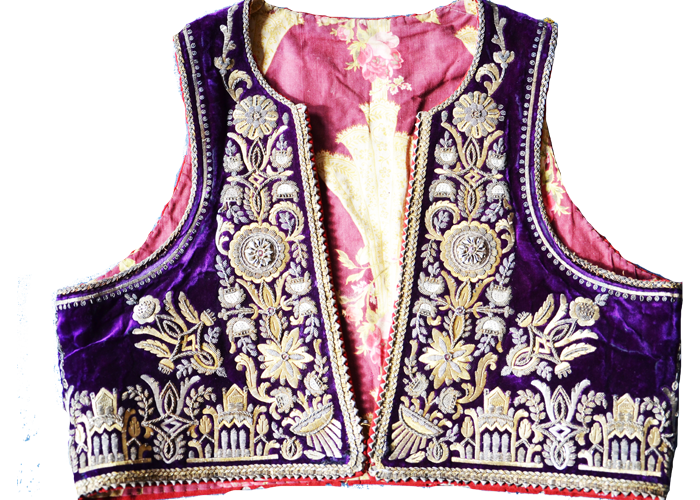
Waistcoat
It was part of the folk costume girls and young brides wore. It dates back to the end of the XIX century. It is made of an imported velvet fabric, woven with golden threads and various cords.
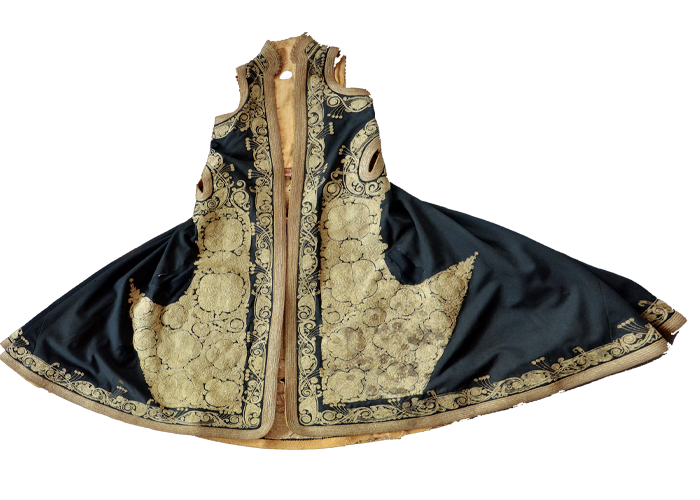
Sako
A garment worn by the women of the aristocracy of Berat. It belongs to the middle of the XIX century and it is made by a thin imported fabric, woven with golden threads and galloons.
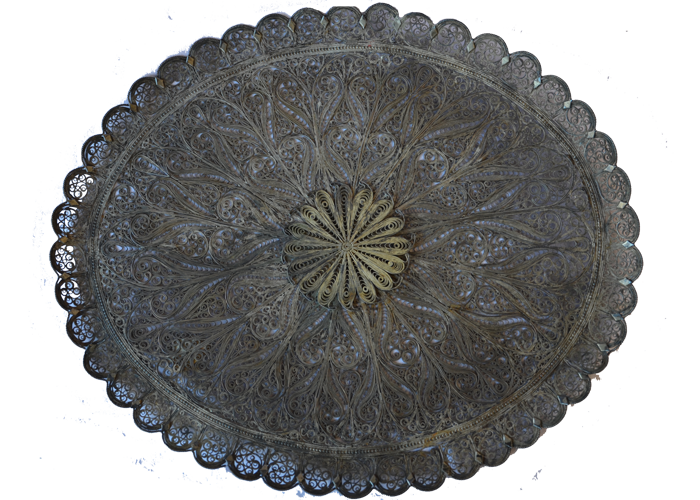
Tray
A serving tray. It belongs to the beginning of the XIX century. It is made of silver manufactured with the filigree technique.
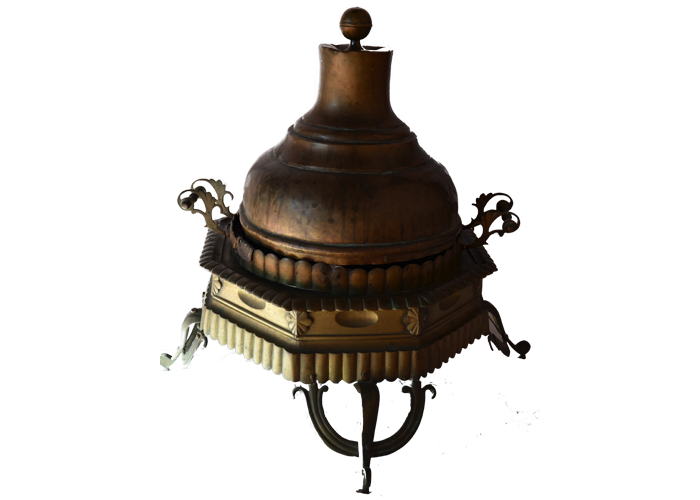
Brazier
The brazier with a lid was widely used by the rich and middle classes. It was used to provide heat through coal burning. It was made on bronze or copper. It belongs to the middle of the XIX. century.
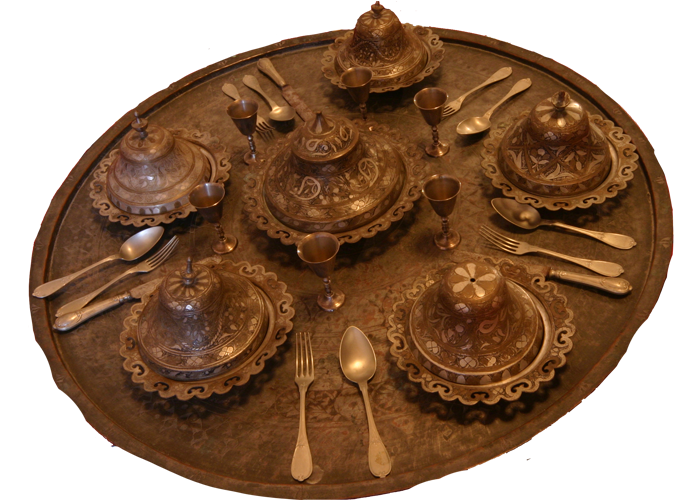
The tableware
The tableware of the important families of the city was composed by a large round copper tray (sini) decorated on relief .Siting on the sini were the silver-plated bowls with lids, spoons, forks, and kniveswith Oriental-inspired decorations.
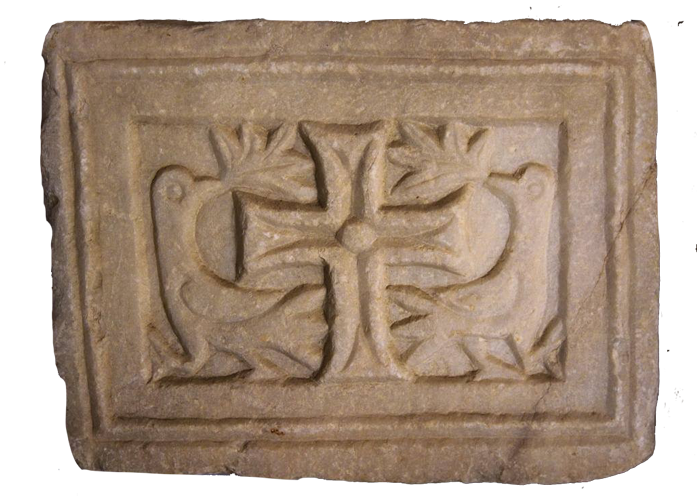
Reliquary
A container for relics of one or more saints. This object is not common for the city of Berat, and it belongs to the early Christian period. It is made of marble.
© 2020. All rights reserved
Design & Development by GO DIGITAL MEDIA




